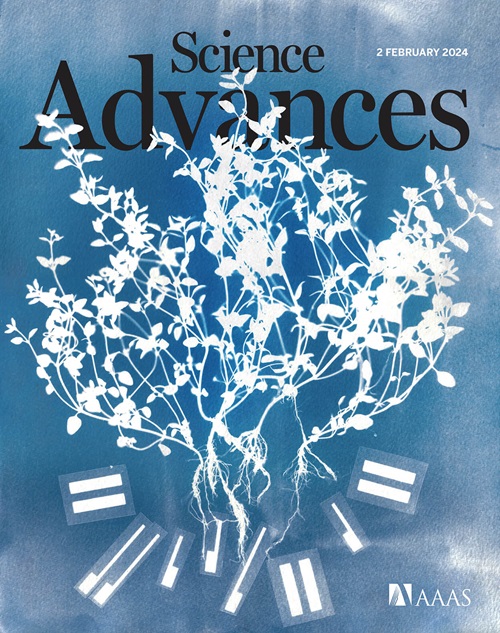Assessing cancer therapeutic efficacy in vivo using [2H7]glucose deuterium metabolic imaging
IF 11.7
1区 综合性期刊
Q1 MULTIDISCIPLINARY SCIENCES
引用次数: 0
Abstract
Metabolic imaging produces powerful visual assessments of organ function in vivo. Current techniques can be improved by safely increasing metabolic contrast. The gold standard, 2-[18F]fluorodeoxyglucose-positron emission tomography (FDG-PET) imaging, is limited by radioactive exposure and sparse assessment of metabolism beyond glucose uptake and retention. Deuterium magnetic resonance imaging (DMRI) with [6,6-2H2]glucose is nonradioactive, achieves tumor metabolic contrast, but can be improved by enriched contrast from deuterated water (HDO) based imaging. Here, we developed a DMRI protocol employing [2H7]glucose. Imaging 2H-signal and measuring HDO production in tumor-bearing mice detected differential glucose utilization across baseline tumors, tumors treated with vehicle control or anti-glycolytic BRAFi and MEKi therapy, and contralateral healthy tissue. Control tumors generated the most 2H-signal and HDO. To our knowledge this is the first application of DMRI with [2H7]glucose for tumoral treatment monitoring. This approach demonstrates HDO as a marker of tumor glucose utilization and suggests translational capability in humans due to its safety, noninvasiveness, and suitability for serial monitoring.

求助全文
约1分钟内获得全文
求助全文
来源期刊

Science Advances
综合性期刊-综合性期刊
CiteScore
21.40
自引率
1.50%
发文量
1937
审稿时长
29 weeks
期刊介绍:
Science Advances, an open-access journal by AAAS, publishes impactful research in diverse scientific areas. It aims for fair, fast, and expert peer review, providing freely accessible research to readers. Led by distinguished scientists, the journal supports AAAS's mission by extending Science magazine's capacity to identify and promote significant advances. Evolving digital publishing technologies play a crucial role in advancing AAAS's global mission for science communication and benefitting humankind.
 求助内容:
求助内容: 应助结果提醒方式:
应助结果提醒方式:


